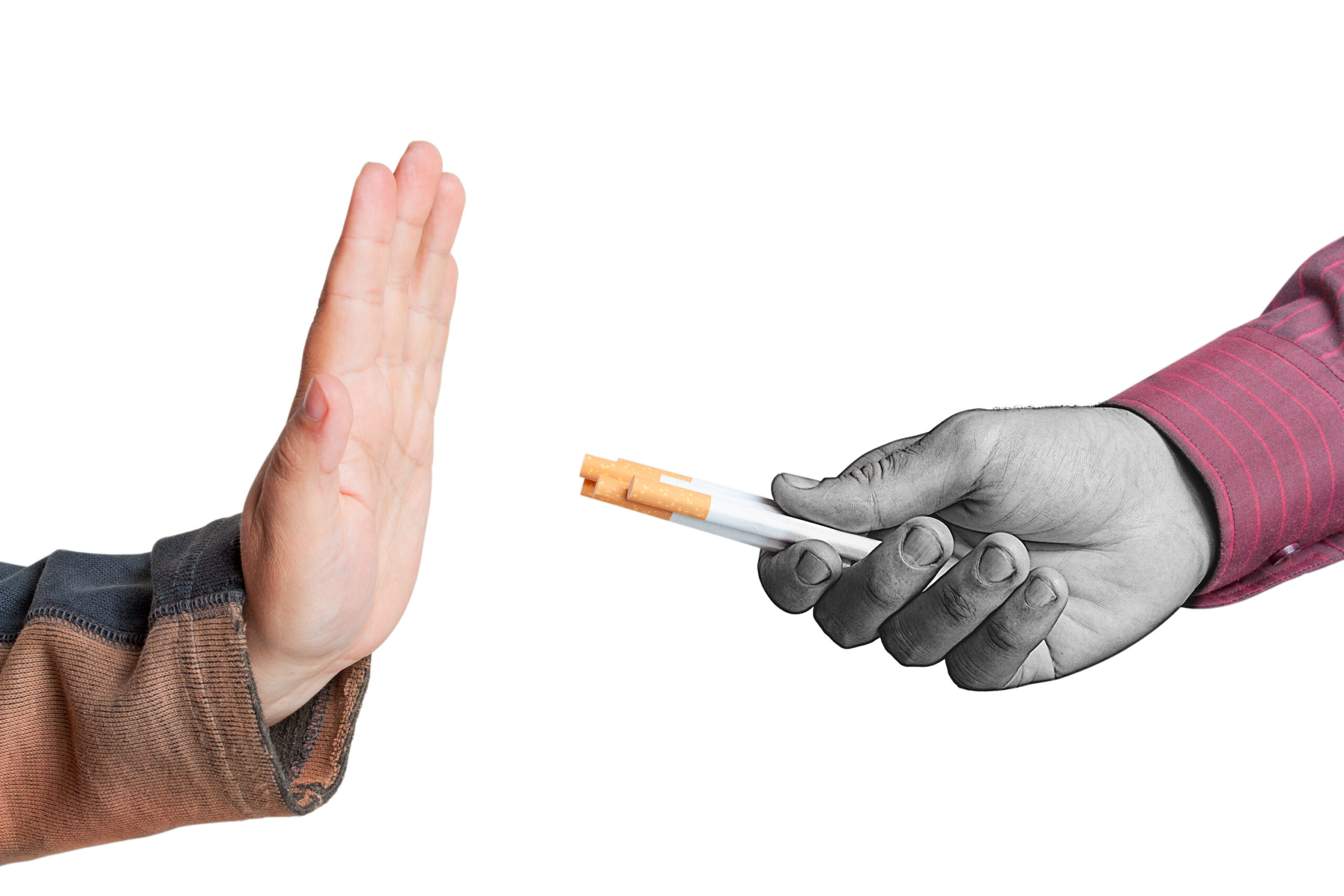Workplace wellness has become a top priority for many companies, as they recognize the importance of promoting employee health and well-being. Wellness challenges are a popular way to engage employees and encourage healthy behaviors. These challenges can range from physical activity challenges to mental health challenges, nutrition and healthy eating challenges, and sleep and relaxation challenges.
Wellness challenges are short-term team activities designed to encourage healthy behaviors and boost employee morale. They can be a fun and effective way to promote healthy habits and create a positive workplace culture. By participating in wellness challenges, employees can improve their physical and mental health, reduce stress, and increase productivity.
Key Takeaways
- Workplace wellness challenges are a popular way to engage employees and encourage healthy behaviors.
- Wellness challenges can range from physical activity challenges to mental health challenges, nutrition and healthy eating challenges, and sleep and relaxation challenges.
- By participating in wellness challenges, employees can improve their physical and mental health, reduce stress, and increase productivity.
Understanding Workplace Wellness
Workplace wellness is a concept that has been gaining popularity in recent years. It refers to the efforts made by employers to improve the health and well-being of their employees. A workplace wellness program can take many forms, but it typically includes a variety of initiatives aimed at promoting healthy habits, reducing stress, and improving overall quality of life.
Employee wellness is a priority in the workplace because it has been shown to have numerous benefits for both employees and employers. For employees, a wellness program can lead to improved physical health, increased job satisfaction, and reduced stress levels. For employers, a corporate wellness program can lead to increased productivity, reduced absenteeism, and improved employee retention rates.
Wellness programs can take many forms, but they typically include a combination of educational initiatives, health screenings, and wellness challenges. Educational initiatives might include workshops on healthy eating, stress management, or exercise. Health screenings can help employees identify health risks and take steps to address them. Wellness challenges might include things like step challenges, healthy eating challenges, or mindfulness challenges.
When designing a workplace wellness program, it’s important to consider the unique needs and interests of your employees. Wellness programs that are tailored to the specific needs of employees are more likely to be successful. It’s also important to make sure that wellness programs are accessible to all employees, regardless of their level of fitness or health.
In summary, workplace wellness programs are a valuable tool for employers looking to improve the health and well-being of their employees. By promoting healthy habits and reducing stress levels, wellness programs can lead to numerous benefits for both employees and employers alike.
Importance of Wellness Challenges
Wellness challenges are becoming increasingly popular in the workplace, and for good reason. They offer a fun and engaging way for employees to prioritize their health and well-being, while also improving workplace culture and productivity. In this section, we’ll explore the importance of wellness challenges and why they should be a part of every company’s wellness program.
Boosts Employee Morale and Engagement
Wellness challenges can help boost employee morale and engagement by providing a sense of community and shared purpose. When employees participate in a wellness challenge together, they feel like they are part of a team working towards a common goal. This can lead to increased motivation, productivity, and job satisfaction.
Improves Physical and Mental Health

Wellness challenges can also improve employees’ physical and mental health. By participating in a fitness challenge or nutrition challenge, employees can learn healthy habits and make positive changes to their lifestyle. This can lead to reduced stress, improved sleep, increased energy, and a lower risk of chronic diseases.
Creates a Culture of Wellness
Wellness challenges can help create a culture of wellness in the workplace. When a company prioritizes employee health and well-being, it sends a message that it values its employees and wants them to thrive both inside and outside of work. This can lead to a more positive work environment, increased employee loyalty, and improved recruitment and retention rates.
Encourages Work-Life Balance
Wellness challenges can also encourage work-life balance by promoting healthy habits both in and out of the office. For example, an office fitness challenge may encourage employees to take breaks throughout the day to stretch or go for a walk. This can help prevent burnout and improve overall well-being.
Overall, wellness challenges are an important part of any workplace wellness program. They offer a fun and engaging way for employees to prioritize their health and well-being, while also improving workplace culture and productivity. By incorporating wellness challenges into your company’s wellness program, you can create a healthier, happier, and more productive workforce.
Benefits of Employee Wellness Initiatives
Employee wellness initiatives can have a significant positive impact on both employees and employers. Here are some of the benefits of implementing wellness challenges in the workplace:
Improved Employee Health
Wellness challenges can help employees improve their physical and mental health. By encouraging healthy habits such as regular exercise, healthy eating, and stress management, employees can reduce their risk of chronic diseases such as heart disease, diabetes, and obesity. This can lead to lower healthcare costs for both employees and employers.
Increased Employee Engagement
Wellness challenges can also increase employee engagement in the workplace. When employees feel that their employer cares about their health and wellbeing, they are more likely to be engaged, productive, and committed to their work. Engaged employees are also more likely to stay with their employer long-term.
Boosted Employee Morale
Wellness challenges can also boost employee morale. When employees feel good about themselves and their health, they are more likely to be happy and satisfied at work. This can lead to a more positive work environment and better relationships between employees and their colleagues.
Enhanced Employee Wellbeing
Wellness challenges can also enhance employee wellbeing. By encouraging healthy habits and providing resources for stress management, employees can improve their overall wellbeing. This can lead to a better work-life balance and improved quality of life.
Inclusion of Remote Employees
Wellness challenges can also be inclusive of remote employees. With the rise of remote work, it’s important to ensure that all employees have access to wellness initiatives. Virtual challenges and resources can be provided to remote employees to ensure that they can participate in wellness initiatives and improve their health and wellbeing.
Overall, implementing wellness challenges in the workplace can have a positive impact on employees and employers. By improving employee health, engagement, morale, and wellbeing, employers can create a more positive and productive work environment.
Physical Activity Challenges
Physical activity is an essential part of a healthy lifestyle, and it’s also a crucial aspect of workplace wellness programs. Encouraging employees to engage in physical activity can help reduce stress, improve mood, and boost productivity. Here are some physical activity challenges that can get your employees up and moving:
- Walking Challenge: A walking challenge is an excellent way to encourage employees to get up and move around during the workday. The challenge can be as simple as tracking the number of steps employees take each day, or it can be more complex, with teams competing against each other to see who can walk the most.
- Fitness Challenges: Fitness challenges can be a fun way to get employees excited about physical activity. These challenges can include things like push-up contests, plank challenges, or online group workouts. Employees can compete against each other or work together as a team to reach a fitness goal.
- Exercise Breaks: Encouraging employees to take short exercise breaks throughout the workday can help them stay active and alert. These breaks can include things like stretching, yoga, or even a quick jog around the building.
It’s essential to make these challenges accessible and inclusive for all employees. Consider providing modifications for those with physical limitations or offering alternative activities for those who may not be able to participate in certain challenges.
Overall, physical activity challenges can be an effective way to promote a healthy workplace culture and encourage employees to prioritize their health and well-being.
Mental Health Challenges
Mental health challenges are becoming increasingly common in the workplace. According to a study by the American Psychological Association, stress is the most common cause of mental health issues in the workplace. Other factors that can contribute to mental health challenges include burnout, depression, anxiety, emotional health, loneliness, and mental well-being.
Employers can take several steps to address mental health challenges in the workplace. One effective strategy is to provide employees with resources and support for managing stress. This can include access to mental health professionals, stress management workshops, and mindfulness training.
Another important step is to create a culture of open communication and support. Employers can encourage employees to speak up about their mental health challenges without fear of stigma or retaliation. This can help to reduce the negative impact of mental health challenges on employees and improve overall well-being.
Employers can also take steps to promote work-life balance and reduce the risk of burnout. This can include offering flexible work arrangements, such as telecommuting or flexible schedules, and encouraging employees to take time off when they need it.
Overall, addressing mental health challenges in the workplace is an important part of promoting employee well-being and productivity. By providing resources and support for managing stress, creating a culture of open communication and support, and promoting work-life balance, employers can help to reduce the negative impact of mental health challenges on employees and improve overall well-being.
Nutrition and Healthy Eating Challenges
One of the most common workplace wellness challenges is centered around nutrition and healthy eating. By encouraging employees to adopt healthy eating habits, companies can improve their employees’ overall health and well-being. Here are a few ideas for nutrition and healthy eating challenges that can be implemented in the workplace:
1. Healthy Eating Challenge
The Healthy Eating Challenge is a popular workplace wellness challenge that encourages employees to make healthier food choices. This challenge can be designed to focus on specific areas of nutrition, such as reducing sugar intake, increasing vegetable consumption, or eating more whole grains. The challenge can be done individually or in teams, and it can be customized to fit the needs of the employees.
2. Balanced Diet Challenge
The Balanced Diet Challenge is another popular workplace wellness challenge that encourages employees to eat a balanced diet. The goal of this challenge is to help employees understand the importance of eating a variety of foods from all food groups. This challenge can be done individually or in teams, and it can be customized to fit the needs of the employees.
3. Healthy Snack Challenge
The Healthy Snack Challenge is a fun and easy way to encourage employees to make healthier snack choices. This challenge can be designed to focus on specific areas of nutrition, such as reducing sugar intake or increasing protein consumption. The challenge can be done individually or in teams, and it can be customized to fit the needs of the employees.
4. Weight Loss Challenge
The Weight Loss Challenge is a popular workplace wellness challenge that encourages employees to lose weight in a healthy way. This challenge can be done individually or in teams, and it can be customized to fit the needs of the employees. The challenge can focus on healthy weight loss strategies, such as increasing physical activity and reducing calorie intake.
5. Healthy Habits Challenge
The Healthy Habits Challenge is a workplace wellness challenge that encourages employees to adopt healthy habits. This challenge can focus on a variety of healthy habits, such as getting enough sleep, reducing stress, and increasing physical activity. By encouraging employees to adopt healthy habits, companies can improve their employees’ overall health and well-being.
In conclusion, workplace wellness challenges focused on nutrition and healthy eating can have a significant impact on employee health and well-being. By encouraging employees to adopt healthy eating habits, companies can improve their employees’ overall health, reduce absenteeism, and increase productivity.
Sleep and Relaxation Challenges
Getting enough sleep is crucial for overall health and well-being. Unfortunately, many employees struggle to get the recommended 7 or more hours of sleep each night. Workplace wellness challenges that focus on sleep and relaxation can help employees develop healthy sleep habits and reduce stress.
One popular sleep challenge is a “sleep challenge.” This challenge encourages employees to track their sleep for a set period of time, such as a week or a month. Participants can use a sleep tracking app or a simple sleep journal to record the number of hours they sleep each night. At the end of the challenge, participants can compare their sleep patterns and discuss strategies for improving sleep quality.
Another effective challenge is a “relaxation challenge.” This challenge encourages employees to practice relaxation techniques, such as meditation, deep breathing, or yoga. Participants can attend group meditation sessions or use a relaxation app to guide them through the process. By practicing relaxation techniques regularly, employees can reduce stress and improve their overall well-being.
Employers can also implement policies and workplace strategies to promote sleep health. For example, allowing flexible work hours can help employees balance work and personal responsibilities, making it easier to get enough sleep. Employers can also encourage employees to take breaks throughout the day to rest and recharge.
In summary, workplace wellness challenges that focus on sleep and relaxation can help employees develop healthy sleep habits, reduce stress, and improve overall well-being. Employers can also implement policies and workplace strategies to promote sleep health.
Role of Management in Wellness Programs
Management plays a crucial role in advancing workplace wellness programs. Managers are responsible for setting the tone of the work environment, and they have the power to make or break the development of a culture of well-being. Therefore, companies need to establish managers’ well-being responsibilities and equip them to own their role in the process.
According to Gallup, progressive organizations understand that managers play a key role in creating and sustaining a culture of well-being. These organizations invest in their managers’ development, provide them with resources and tools, and hold them accountable for their well-being responsibilities. Managers who are equipped to lead by example and promote well-being can create a positive work environment that fosters engagement, productivity, and overall well-being.
Leadership support is also essential for the success of wellness programs. When leadership is committed to wellness, it sends a message to employees that their well-being matters. This commitment can be demonstrated through actions such as providing resources for wellness programs, participating in wellness activities, and recognizing employees who prioritize their well-being.
Wellness committees can also play a vital role in engaging employees in wellness programs. These committees can help plan and implement wellness initiatives, communicate the benefits of wellness programs to employees, and provide feedback to management on the effectiveness of wellness programs.
In summary, management, leadership, and wellness committees all play a critical role in advancing workplace wellness programs. By providing resources, support, and accountability, these entities can create a culture of well-being that benefits both employees and the organization as a whole.
Tools and Resources for Wellness Challenges
When it comes to organizing wellness challenges, there are a variety of tools and resources available to help you get started. Here are a few options:
Wellness Challenge Apps
There are several wellness challenge apps available that can help you track progress and stay motivated. Some popular options include:
- MyFitnessPal – This app allows users to track their food intake and exercise, set goals, and connect with friends for accountability.
- Fitbit – Fitbit offers a range of fitness trackers that can monitor steps taken, calories burned, and sleep patterns. The app also allows users to set goals and track progress over time.
- HealthyWage – This app allows users to bet on their weight loss goals, with the potential to win cash prizes if they meet their targets.
Gym Memberships
Many companies offer gym memberships as part of their wellness programs. This can be a great way to encourage employees to stay active and prioritize their health. Some popular gym chains include:
- 24 Hour Fitness – With over 400 locations across the US, 24 Hour Fitness offers a range of cardio and strength training equipment, as well as group fitness classes.
- Planet Fitness – Known for its “Judgement Free Zone” philosophy, Planet Fitness offers affordable memberships and a welcoming environment for people of all fitness levels.
- Anytime Fitness – With over 4,000 locations worldwide, Anytime Fitness offers 24/7 access to fitness equipment and personal training services.
Other Tools and Resources
In addition to apps and gym memberships, there are several other tools and resources that can support workplace wellness challenges. These include:
- Wellness Coaches – Many companies hire wellness coaches to provide guidance and support to employees as they work towards their health goals.
- Healthy Snack Options – Providing healthy snack options in the workplace can help employees make better food choices throughout the day.
- Fitness Challenges – Hosting fitness challenges, such as step challenges or fitness competitions, can help employees stay motivated and engaged in their wellness journey.
Overall, there are many tools and resources available to support workplace wellness challenges. By leveraging these resources, companies can help employees prioritize their health and wellbeing, leading to happier, healthier, and more productive teams.
Promoting Participation and Engagement
Encouraging employee participation and engagement is crucial for the success of any workplace wellness program. Without active involvement, the program will not be effective in improving the health and well-being of employees. Here are some strategies to promote participation and engagement in workplace wellness programs:
Increase Employee Understanding of Well-being Needs and Offerings
It is essential to ensure that employees understand the importance of well-being and the benefits of participating in wellness programs. Employers can communicate with their employees about well-being needs and offerings through various channels, such as emails, newsletters, and posters. Providing employees with information about the program’s goals, activities, and incentives can also help increase participation and engagement.
Offer Incentives

Providing incentives is an effective way to encourage employees to participate in wellness programs. Incentives can be in the form of rewards, such as gift cards, paid time off, or even cash prizes. Employers can also offer incentives for achieving specific wellness goals, such as weight loss or smoking cessation.
Foster Unity and Camaraderie
Creating a sense of unity and camaraderie among employees can help promote participation and engagement in wellness programs. Employers can organize team activities, such as group exercise classes or team-building events, to encourage employees to work together towards a common goal. These activities can also help improve morale and create a more positive work environment.
Recognize and Reward Participation
Recognizing and rewarding employees for their participation and engagement in wellness programs can help motivate others to get involved. Employers can publicly acknowledge employees who have achieved their wellness goals or have made significant progress towards them. Recognition can be in the form of a shout-out in a company newsletter or an award ceremony.
Encourage Teamwork
Encouraging teamwork can help promote participation and engagement in wellness programs. Employers can create teams of employees who work together towards wellness goals. This approach can help employees support and motivate each other, making it easier to achieve their wellness goals.
In conclusion, promoting participation and engagement in workplace wellness programs requires a multi-faceted approach that includes increasing employee understanding of well-being needs and offerings, offering incentives, fostering unity and camaraderie, recognizing and rewarding participation, and encouraging teamwork. By implementing these strategies, employers can create a workplace culture that values health and well-being, resulting in a more productive and satisfied workforce.
Workplace Culture and Wellness
A positive workplace culture can have a significant impact on employee wellness. When employees feel like they belong and are part of a supportive community, they are more likely to be productive, engaged, and motivated. Organizations that prioritize wellness as part of their culture can create an environment that fosters employee well-being and helps prevent burnout.
One way to build a culture of wellness is to create a wellness committee or task force. This group can be responsible for planning and implementing wellness initiatives, such as challenges, workshops, and events. By involving employees in the planning process, the committee can ensure that initiatives are relevant and engaging.
Another way to promote wellness is to offer flexible work arrangements. This can include options for remote work, flexible schedules, and time off for self-care. By giving employees more control over their work-life balance, organizations can reduce stress and improve well-being.
Additionally, organizations can create a culture of wellness by providing resources and support for mental health. This can include access to counseling services, mental health days, and training for managers on how to support employees who may be struggling.
Overall, creating a workplace culture that prioritizes wellness can have a positive impact on employee well-being and organizational success. By fostering a sense of belonging and promoting healthy habits, organizations can create a productive and engaged workforce.
Monitoring Progress and Outcomes
Monitoring progress and outcomes is crucial in ensuring the success of your workplace wellness program. It allows you to track the effectiveness of the program, identify areas for improvement, and make data-driven decisions to optimize the program. Here are some ways to monitor progress and outcomes:
Set Objectives
Setting objectives is the first step in monitoring progress and outcomes. Objectives should be specific, measurable, achievable, relevant, and time-bound (SMART). For example, if your goal is to reduce employee absenteeism, your objective could be to reduce absenteeism by 10% within the next six months. By setting objectives, you can track progress towards your goal and make necessary adjustments to the program.
Measure Work Performance
Measuring work performance is another way to monitor progress and outcomes. You can use metrics such as productivity, quality, and customer satisfaction to evaluate the impact of your wellness program on work performance. For instance, a study by the National Health Service found that Trusts that made the most extensive use of good people management practices were over three times more likely to have the lowest levels of staff sickness absence and at least four times more likely to have the most satisfied patients. This suggests that investing in employee wellness can lead to better work performance.
Track Behavior Change
Tracking behavior change is also important in monitoring progress and outcomes. You can use surveys, focus groups, or other feedback mechanisms to assess whether employees are adopting healthy behaviors such as exercising regularly, eating a balanced diet, and managing stress effectively. By tracking behavior change, you can identify areas where employees may need additional support or education.
Use Data Analytics Tools
Data analytics tools can help you collect, analyze, and visualize data related to your wellness program. For example, you can use tools such as Excel, Google Analytics, or Tableau to create dashboards that track key performance indicators (KPIs) such as participation rates, engagement levels, and return on investment (ROI). By using data analytics tools, you can gain insights into the effectiveness of your program and make data-driven decisions to optimize it.
In conclusion, monitoring progress and outcomes is essential in ensuring the success of your workplace wellness program. By setting objectives, measuring work performance, tracking behavior change, and using data analytics tools, you can optimize your program and achieve your goals.
Addressing Specific Wellness Challenges
Workplace wellness programs can address specific health challenges that employees may face. Here are some examples of wellness challenges that can help improve employee health:
Smoking Cessation Challenge
Smoking is a major health hazard that can cause serious health problems. A smoking cessation challenge can help employees quit smoking and improve their health. The challenge can include educational sessions, support groups, and incentives for quitting smoking.
Pandemic Wellness Challenge
The COVID-19 pandemic has caused significant stress and anxiety for many people. A pandemic wellness challenge can help employees cope with the stress and anxiety caused by the pandemic. The challenge can include mindfulness exercises, virtual support groups, and resources for mental health.
Meditation Challenge
Meditation can help reduce stress and improve mental health. A meditation challenge can encourage employees to practice meditation regularly. The challenge can include guided meditation sessions, resources for learning meditation techniques, and incentives for practicing meditation.
Group Meditation
Group meditation can create a sense of community and support among employees. A group meditation challenge can encourage employees to meditate together regularly. The challenge can include group meditation sessions, resources for learning meditation techniques, and incentives for participating in group meditation.
Mindfulness Challenge
Mindfulness can help improve mental health and reduce stress. A mindfulness challenge can encourage employees to practice mindfulness regularly. The challenge can include resources for learning mindfulness techniques, mindfulness exercises, and incentives for practicing mindfulness.
Financial Wellness Challenge
Financial stress can have a significant impact on mental health and overall well-being. A financial wellness challenge can help employees improve their financial well-being. The challenge can include educational sessions on financial planning, resources for managing debt, and incentives for achieving financial goals.
Resilience Challenge
Resilience can help employees cope with stress and adversity. A resilience challenge can encourage employees to develop resilience skills. The challenge can include resources for learning resilience techniques, exercises for building resilience, and incentives for practicing resilience skills.
Overall, workplace wellness challenges can help employees improve their health and well-being. By addressing specific health challenges, employers can create a healthier and more productive workforce.
The Impact of Wellness Initiatives on Workplace Productivity
Workplace wellness initiatives can have a significant impact on employee productivity. By promoting healthy habits and reducing stress, employees are better equipped to focus on their work and complete tasks efficiently. A study conducted by the University of California Riverside found that all employees who participated in a wellness program improved productivity an average of one full work day a month.
In addition to improving productivity, workplace wellness initiatives can also have a positive impact on healthcare costs. By promoting healthy habits and reducing the risk of illness, employees are less likely to require medical attention, resulting in lower healthcare costs for both the employee and the employer.
Absenteeism and turnover rates can also be reduced through workplace wellness initiatives. By promoting a healthy work-life balance and reducing stress, employees are less likely to take sick days or leave their job due to burnout. This can result in a more stable and productive workforce.
Furthermore, workplace wellness challenges can provide an opportunity for employees to bond and build relationships, leading to increased job satisfaction. By participating in challenges together, employees can support and encourage each other, creating a positive and supportive work environment.
Overall, implementing workplace wellness initiatives can provide a significant return on investment in terms of productivity, value, and healthcare costs. By promoting healthy habits and reducing stress, employers can create a more productive and engaged workforce, resulting in a more successful business.
Frequently Asked Questions
What are some unique ways to promote workplace wellness?
There are many unique ways to promote workplace wellness, such as offering healthy snacks in the break room, hosting a walking meeting, or organizing a company-wide fitness challenge. Other ideas include providing ergonomic equipment, offering standing desks, or providing access to mental health resources.
How can employers encourage employees to participate in wellness challenges?
Employers can encourage employees to participate in wellness challenges by making them fun and accessible. Offering incentives or prizes can also motivate employees to participate. It’s important to ensure that challenges are inclusive and accommodate different abilities and interests.
What are some effective workplace wellness programs?
Effective workplace wellness programs include initiatives that promote physical activity, healthy eating, stress management, and mental health. Examples include on-site fitness classes, healthy cooking workshops, mindfulness meditation sessions, and access to counseling services.
What are some low-cost workplace wellness ideas?
Low-cost workplace wellness ideas include organizing a walking or running group, providing healthy snack options, offering standing desks, and hosting a lunch-and-learn session on stress management or nutrition. Other ideas include organizing a pedometer challenge or encouraging employees to take stretch breaks throughout the day.
How can workplace wellness programs improve employee morale and productivity?
Workplace wellness programs can improve employee morale and productivity by reducing stress, increasing physical activity, and promoting healthy habits. Employees who are healthier and happier are more likely to be engaged and productive at work.
What are some creative ways to incorporate fitness challenges into the workplace?
Creative ways to incorporate fitness challenges into the workplace include organizing a step challenge, hosting a company-wide fitness competition, or offering on-site yoga or Pilates classes. Other ideas include organizing a bike-to-work day or encouraging employees to take the stairs instead of the elevator.









